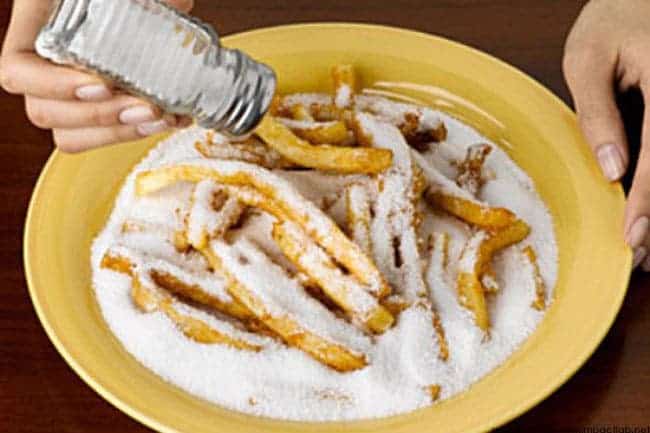Many people today are consuming more salt than they actually need – while this may make foods tastier, it also increases the risk of heart disease and stroke. But a new study found that dietary salt could actually have a dietary advantage, defending the body against invading microbes.
Salt is one of the simples minerals in the world, yet it has an extremely rich and controversial history. It used to be extremely valuable in ancient and medieval times, up to the point where only the elite could enjoy it in proper quantities in some areas of the world. Interestingly enough, only about 6% of the salt manufactured today in the world is used in food. Of the remainder, 12% is used in water conditioning processes, 8% goes for de-icing highways and 6% is used in agriculture. The rest (68%) is used for manufacturing and other industrial processes. Salt is really cheap pretty much virtually everywhere in the world but we’re dealing with a different problem – we’re eating too much of it.
The World Health Organization recommends that all adults should consume less than 2,000 mg of sodium (which is equivalent to 5 g of salt) per day with some advocating for less than 1,200 mg of sodium (3 g of salt) per day, but most people in the developed world go way above that limit, thus significantly increasing their risk of heart diseases. But a new study found that there might also be some advantages to eating a lot of salt; in mice, high salt intake boosts their immune response to parasitic skin infections, suggesting that this might also work in humans – promoting defense against microbial infections.
“Up to now, salt has been regarded as a detrimental dietary factor; it is clearly known to be detrimental for cardiovascular diseases, and recent studies have implicated a role in worsening autoimmune diseases,” says first study author Jonathan Jantsch, a microbiologist at Universitätsklinikum Regensburg and Universität Regensburg. “Our current study challenges this one-sided view and suggests that increasing salt accumulation at the site of infections might be an ancient strategy to ward off infections, long before antibiotics were invented.”
Common salt is a mineral composed primarily of sodium chloride (NaCl), so naturally it contains a lot of salt. When you eat it, the sodium tends to deposit in your skin, where it can cause significant damage to the body, although the exact mechanism is not properly understood.
“Despite the overwhelming evidence linking dietary salt to disease in humans, the potential evolutionary advantage of storing so much salt in the body has not been clear,” says senior study author Jens Titze, who studies the link between sodium metabolism and disease at Vanderbilt University School of Medicine.
So the team set out to investigate what this advantage may be – and learned that high salt intake (and absorption in the skin) could make people more effective at fighting certain skin parasites.
“We also think that local application of high-salt-containing wound dressings and the development of other salt-boosting antimicrobial therapies might bear therapeutic potential.”
Still, scientists warn that this isn’t a green light for eating as much salt as possible. The dietary advantage they reported is very niched and does not compensate for all the damage salt can do.
“Due to the overwhelming clinical studies demonstrating that high dietary salt is detrimental to hypertension and cardiovascular diseases, we feel that at present our data does not justify recommendations on high dietary salt in the general population,” Jantsch says. “Nevertheless, in situations where endogenous accumulation of salt to sites of infection is insufficient, supplementation of salt might be a therapeutic option. But this needs to be addressed in further studies.”
Journal Reference: Cell Metabolism.










